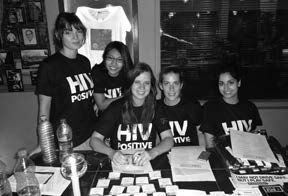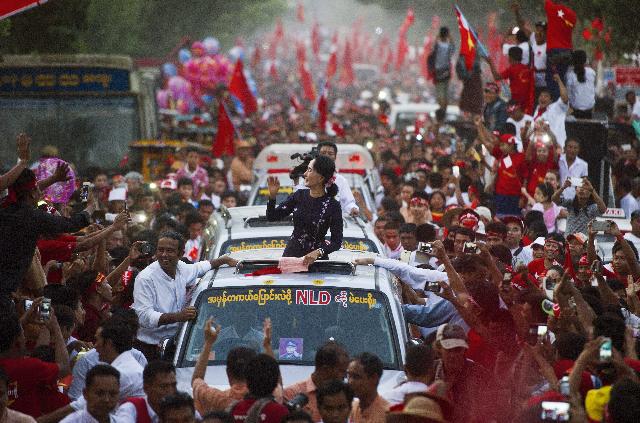“Culture is not a monolith; it needs to change and adapt to shifting realities.”- Anindita Sengupta, The Guardian, “India in denial over sex education”
In India, this is certainly true: conservative religious pressures have led to a lack of health education and little knowledge of basic sexual safety. While this knowledge is needed throughout the world, India is struggling with sex-related health problems. According to the National Family Health Survey III as q uoted by Sengupta, “nearly half of women in India get married before the age of 18” and nearly two and a half million people in India are currently living with AIDS. Of these, 87.4% contracted the virus from heterosexual contact, according to MedIndia. Clearly basic sex education is desperately needed; but programs which would provide the education have been rejected at the national level, for example the Adolescence Education Programme was rejected by Parliament, as well as at a state level. According to Sonawane, the state of Maharashtra in 2007 placed a “ban on all books on sex education” as well as disallowing “the subject in…schools following the state syllabus.” According to Sengupta, this rejection comes from “centuries of religious and cultural mores. Leaders from Buddha to Gandhi demonized sex, it was seen as something…to be avoided.” In The Indian Express, members of the Hindu nationalist Bharatiya Janata Party claimed that “the issue is against all religions” and that they “did not want children to be corrupted and religion…violated.” Conservative religious values are central to the prevention of basic sexual education which would increase the well-being of all Indians.
uoted by Sengupta, “nearly half of women in India get married before the age of 18” and nearly two and a half million people in India are currently living with AIDS. Of these, 87.4% contracted the virus from heterosexual contact, according to MedIndia. Clearly basic sex education is desperately needed; but programs which would provide the education have been rejected at the national level, for example the Adolescence Education Programme was rejected by Parliament, as well as at a state level. According to Sonawane, the state of Maharashtra in 2007 placed a “ban on all books on sex education” as well as disallowing “the subject in…schools following the state syllabus.” According to Sengupta, this rejection comes from “centuries of religious and cultural mores. Leaders from Buddha to Gandhi demonized sex, it was seen as something…to be avoided.” In The Indian Express, members of the Hindu nationalist Bharatiya Janata Party claimed that “the issue is against all religions” and that they “did not want children to be corrupted and religion…violated.” Conservative religious values are central to the prevention of basic sexual education which would increase the well-being of all Indians.
During our experiences in India, both of us had the opportunity to witness this contention between conservative values and the urgency of health education. This summer we had the chance to participate in an internship through the Indian NGO Deep Griha in Maharashtra. Deep Griha is a local grassroot organization based in impoverished areas and neighborhoods that aims to promote health and empowerment in marginalized communities. Our specific project focused on the issue of HIV/AIDS epidemic in the state. According to Chief Minister Prithviraj Chavan in Indo-Asian News Service, “Maharashtra figures among the AIDS-affected states with around 420,000 HIV/AIDS patients, or 18% of the country’s total affected population,” meaning that the state has one of the highest prevalence rates of HIV/AIDS in India. We organized seminars, presentations, social media campaigns, and events while working to raise awareness and fundraise. Our work brought us to local universities, rehabilitation centers, and local venues such as restaurants, clubs, and bars.
Despite previous warnings, we found our audience rather responsive to our cause. Of course, some shied away or giggled awkwardly as we performed the condom demonstration or tackled certain delicate topics, such as sex or drugs. But others did not hesitate to ask questions, and some were even willing to offer answers to others’ questions and participate actively in activities.However, let us not forget that despite its modernization, India is still a rather conservative country, one where issues of infanticide targeted at girls and Sati practices (religious ceremonies of burning widows) are still present. In India, women are far from being equal to men. According to the Thomson Reuters Foundation survey, India is “the worst place for women” in the world. And in our HIV/AIDS awareness mission, being women often came in the way. Countless times we were told that “young women should not be dealing with drugs, sex and condoms.” Events were taken more seriously and overall ran more smoothly when male volunteers were present.
The issue of sex and contraception is, in India as in many countries throughout the world, excessively sensitive and taboo. This is a major issue in a country – according to Monica Chadha of BBC News, India has “the highest number of AIDS patients in the world”, a number which is still increasing. Our work brought us to vulnerable populations, drug addicts, college students, partiers and clubbers. In many of our presentations, our hosts prohibited us from handing out condoms, because it “was not appropriate”, or “would send the wrong message.” We found that in many cases, those claims were disconnected from the reality of the audiences we were working with. University students and unbridled partiers were rather open about their lifestyles, and keeping them away from contraception is highly dangerous. The undergraduate Dean of Students of a local university agreed that our cause was important and urgently needed to be addressed, but that “condoms were not necessary”. He also told us that as women, we would not be able to answer appropriately the questions of the male students. Instead of educating about the dangers of HIV/AIDS, unprotected sex, unsafe drug practices, many authority figures and institutions seem to prefer to stick to the demonization of premarital sex. Clearly, there is still a lot of work to be done, as Chadha states, “India, the country that gave the world the Kama Sutra, still hesitates to talk about sex openly in the 21st century.”
The good news is, however, that when religion is placed in the context of community development, religiously motivated workers can help promote awareness of sexual health. Working for the good of the community can help members of religious groups cooperate peacefully as well. The Deep Griha society was founded on the Christian beliefs of Rev. Bhaskar Onwale; commemoration ceremonies begin with Christian prayers. The workers, however, are often Hindu and commemoration ceremonies include Hindu hymns as well. In their community work, they respect both sets of beliefs and channel their religious devotion into helping community awareness of sexual health and HIV issues. In this case, religiously inspired devotion in the promotion of the community health led both to increased sexual education and treatment of HIV/AIDS, as well as religious cooperation and mutual appreciation.
And despite the constraints and obstacles we had to work through, our experience in Deep Griha was first hand proof that cooperation between multiple religious communities for a cause concerning everyone, indiscriminate of their religious, ethnic, or caste affiliation, can create undeniably constructive results. The Christian organization Deep Griha works with local Christian, Hindu and Muslim communities. It is involved with nearby residents of the organization’s headquarters, the staff’s neighbors and acquaintances, as well as children whose life is affected by AIDS without prejudice or discrimination. Many members of staff themselves originate from these communities, feel deeply concerned for and connected to the individuals affected by HIV/AIDS, and can easily relate to their situations. Similarly, venues, universities, and rehabilitation centers were more than willing to host our events and presentations, despite the religious affiliation of Deep Griha. Instead of being a hindrance to harmony within the local communities, religion seems to be the fuel for cooperation and union.





